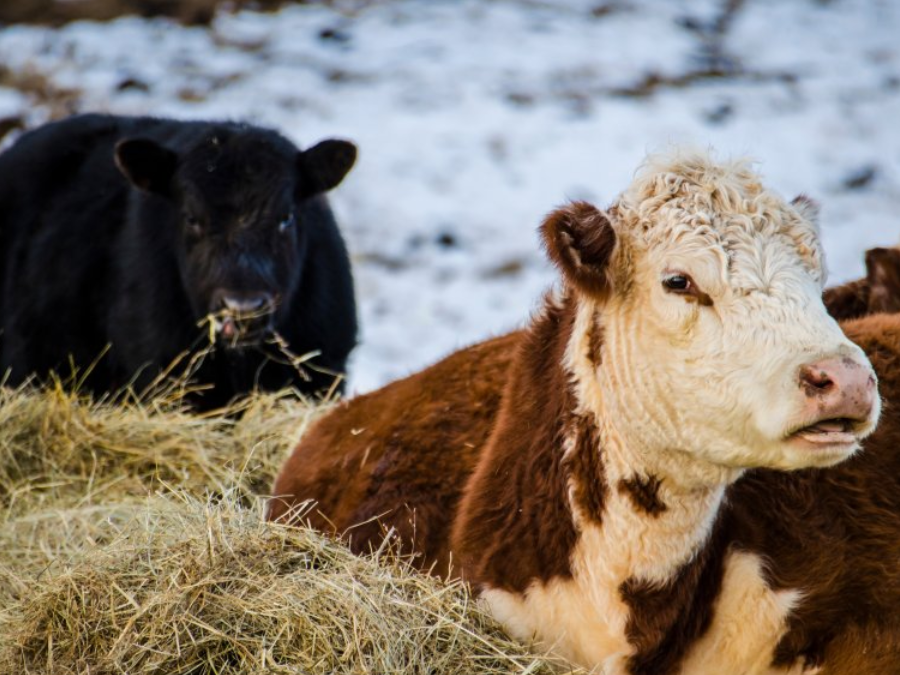Managing livestock in the winter makes you truly appreciate the spring that follows. Here are 5 tips for keeping livestock healthy and maintaining production during the winter. This article is broad across multiple species of livestock because these tips apply to all animals from chickens to cattle. These 5 tips are not listed in order of importance because each one of these are equally important in keeping your livestock healthy and productive through the winter.
- Air Quality is crucial for animal health. When it’s cold, we want to close up the barn or chicken to keep our animals warm. That’s a natural response. But we still need to factor in air quality. Closing up the barn reduces airflow, which causes ammonia to build up resulting in poor air quality. In humid environments (like inside a barn), ammonia is heavier than oxygen, so it will settle in low-lying areas and competes with oxygen. High ammonia levels will lead to respiratory infections like pneumonia.
- Water needs to be clean and accessible! Frozen water is not accessible, so break up water tanks when they freeze over. In weather like we had over the Christmas weekend, a water trough heater will prevent waterers from turning into a giant ice cube! Water consumption drives feed consumption, so less water intake leads to lower feed intake. When animals eat less feed, they lose body condition, decreasing production (weight loss, less weight gain, or lower lay rate).
- Chickens consume twice as much water as feed in weight and laying hens without water for several hours will drop in egg production and could possibly force hens to molt.
- The shelter is important for protection from rain, snow, and wind. The lower critical temperature (LCT) is the lower limit of an animal’s comfort zone. When below this level, animals need to increase their rate of heat production. At this temperature, animal performance declines because energy is used to keep the animal warm rather than for production (growth, lay rate, etc.). The LCT varies based on livestock. However, when livestock get wet, some research has suggested the LCT is significantly higher at 60°F. Lastly, energy requirements for an animal with a healthy and dry winter coat increase by 1% for every degree the wind chill temperature falls below the LCT. Examples of LCT for dry livestock:
- Cattle 18-20°F
- Sheep 28°F
- Goats 32°F
- Nutrition. Livestock’s maintenance nutritional requirements increase significantly during cold weather. When temperatures decrease, energy requirements increase. So, animals need more feed in the winter to maintain internal body temperatures and body condition. As a rule, all animals need more calories when they reach the LCT. There are a few ways we can help with this.
- Pigs may need to increase daily feed intake by 3x or more depending on outside temperatures to maintain body condition
- Chickens, we can help with scratch grains. 1 oz of scratch grain per chicken will give additional calories.
- Cattle, sheep, and goats will eat more forage in cooler temperatures. These forages should be good quality with adequate protein and sugars for their stage of production. Fiber digestion in a ruminant (cattle, sheep, goats) result in the energy they need to sustain their body condition. Now it’s rare to see temperatures as low as 0°F in the southeast, but when the temperature approaches 0°F, you can expect to feed about 30% more.
- Keep bedding clean and dry to keep animals comfortable and warm! This will reduce heat loss, prevent pathogen growth, and will keep animals healthy. Deep bedding is the way to go! Deep bedding gives extra insulation for your animals on cold nights. Adding clean bedding daily will reduce ammonia buildup meaning less chances for respiratory problems. If you do not keep it clean and most important dry and the temperatures drop, you end up with frozen bedding and uncomfortable animals.
Armstrong, J. (n.d.). Preparing your cattle for severe winter weather. UMN Extension. Retrieved December 14, 2022.
Anderson, A. (Feb 2015.). Critical Temperatures. NC Cooperative Extension. Retrieved December 14, 2022.
Hartman, D. (n.d.). Cold Stress and Beef Cattle. Penn State Extension. Retrieved December 14, 2022.
Thomas, M. (Feb 2022.). How Cold is Too Cold for Newborn Lambs and Kids. Sioux Nation Ag Center. Retrieved December 14, 2022.
Hines, E. (n.d.) Cold Temperature Management for Pigs. Penn State Extension. Retrieved December 14, 2022.

